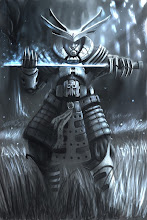Todays contemporary art is clean and simple and had its beginnings in Swiss design as well as other historical styles. It reflects what’t in style currently.
Still prevailing in many contemporary designs is the swiss system of grid alignments, formal organisational systems and the use of sans serif type
Contemporary art, the art of the late 20th century and early 21st century., both an outgrowth and a rejection of modern art As the force and vigour of abstract expressionism diminished, new artistic movements and styles arose during the 1960s and 70s to challenge and displace modernism in painting, sculpture, and other media. Improvisational and Dada-like styles employed in the early 1960s.
The most significant of the often loosely defined movements of early contemporary art included pop art, characterised by commonplace imagery placed in new aesthetic contexts, as in the work of such figures as Andy Warhol and Roy Lichtenstein. The optical shimmerings of the international op art movement in the paintings of Bridget Riley, Richard Anusziewicz, and others; the cool abstract images of colour fields painting in the work of artists such as Ellsworth Kelly and Frank Stella (with his shaped-canvas innovations); the lofty intellectual intentions and stark abstraction of conceptual art by Sol LeWitt and others; the hard-edged hyperreality of photorealism in works by Richard Estes and others; the spontaneity and multimedia components of happenings; and the monumentality and environmental consciousness of land art by artists such as Robert Smithson. One of the most long-lived of these movements was the abstract development known as minimalism, which emphasized the least discernible variation of technique in painting, sculpture, and other media.
Arising from the multimedia experiments of the 1970s, the widespread use of a variety of technology-based media has persisted into the art of the new century. Often included are elements of film, video, sound, performance art, and architecture (principally in installation art). Another trend that has widened the definition and scope of contemporary art has been the conceptually driven use of both photography and language as the substance of numerous works of art.
http://www.infoplease.com/ce6/ent/A0813364.html
Photorealism an approach in this contemporary art work (google images)
From the graphic design point, simple and straight forward design is the contemporary philosophy.Thus making complex information simple to understand.
Creative typography is a major trend and can use a minimalist layout using only an all type approach. The manipulation of the type can add an interesting approach from the normal straight forward. It can add perspective, motion as well as playfulness.





No comments:
Post a Comment